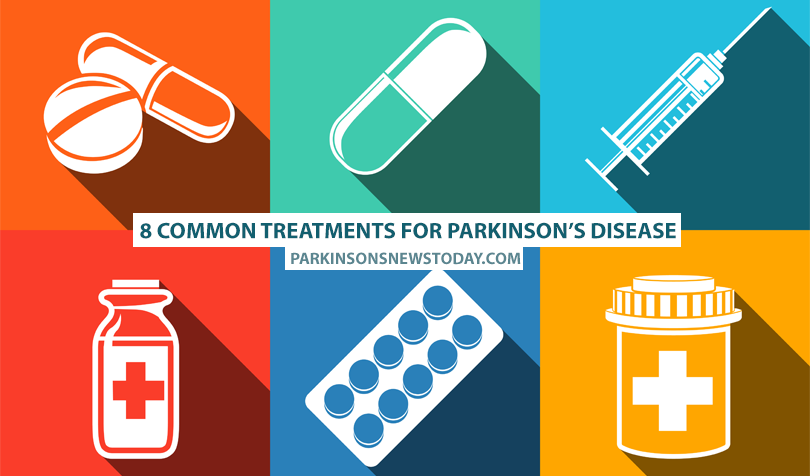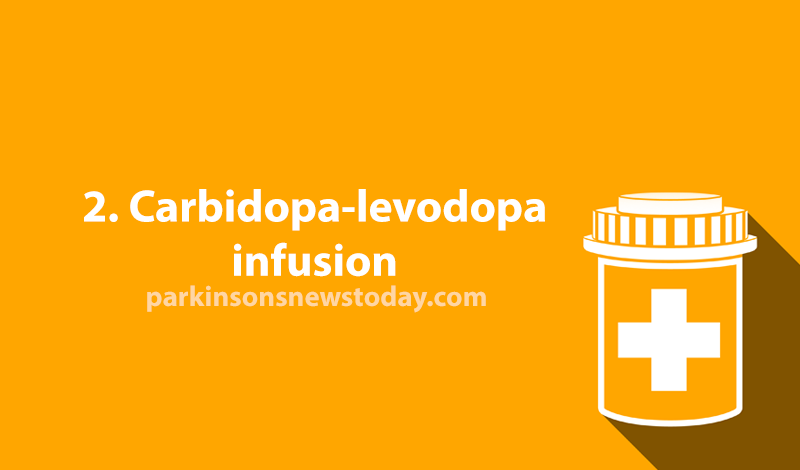8 Common Treatments for Parkinson’s Disease

Parkinson’s disease is a long-term degenerative disease which affects the central nervous system. To date, there is no cure for the condition, but there are medications and therapies available to address some of the symptoms and improve quality of life for patients.
Here are eight of the main drugs and therapies used in the treatment of Parkinson’s disease according to the Mayo Clinic:
Levodopa is a naturally occurring chemical which can enter the brain and be converted to dopamine when combined with carbidopa. The carbidopa also prevents the levodopa from converting into dopamine before it enters the brain.
The is one of the most effective treatments for Parkinson’s although after long-term use, the effects start to fluctuate.
Some people may experience side effects such as nausea, feeling lightheaded, and making sudden involuntary movements.
Join the conversation on this article and many other in the new PD New Today Forums!
Discover 10 early signs of Parkinson’s disease.
In 2015, the FDA approved Duopa, which is a combination of carbidopa and levodopa in a gel form which is administered via a feeding tube into the small intestine.
Duopa is generally given to patients with advanced Parkinson’s disease whose response to carbidopa-levodopa is varied. The drug is infused continuously so the level of the drugs remains constant.
The risks associated with Duopa are infections at the site of the feeding tube and the tube falling out.
Find out about the four possible causes of Parkinson’s disease here.
Dopamine agonist mimic the effects of dopamine in the brain. They are generally not as effective as levodopa but the effects last longer and they can be used in conjunction with levodopa to counter any fluctuation in efficiency.
These medications can be administered through a patch, oral medications or as an injection. The side effects are also nausea and lightheadedness, but may also cause drowsiness, hallucinations and compulsive behaviors such as gambling, overeating, and hypersexuality—which will need to be addressed by a doctor.
Discover seven ways to help you self-manage Parkinson’s disease.
Medications such as selegiline and rasagiline help to prevent dopamine breaking down in the brain by releasing monoamine oxidase B (MAO-B) enzymes.
Generally, these types of medications should not be taken in conjunction with certain narcotics or antidepressants as occasionally patients will suffer from severe reactions. Side effects of MAO-B inhibitors include insomnia and nausea and if taken with carbidopa-levodopa they can also cause hallucinations.
Seven ways to make your home safer for people with Parkinson’s disease.
These types of medications help to prolong the effects of levodopa by blocking brain enzymes that deplete dopamine.
The side effects are the same as taking levodopa, mainly involuntary movements and diarrhea.
Find out more about dopamine’s role in Parkinson’s disease.
Traditionally, anticholinergics have been used over the years to help combat tremors commonly experienced in Parkinson’s disease patients.
However, side effects such as confusion, hallucinations, memory loss, constipation, and urination problems are often more troublesome than the tremors.
Find out about cognitive dysfunction in Parkinson’s disease.
Amantadine can be prescribed to patients in the early stages of Parkinson’s to offer relief from their symptoms. In can also be taken in combination with carbidopa-levodopa in the later stages of the disease to help control side effects such as involuntary movements.
Find out about non-movement symptoms of Parkinson’s disease here.
Most regularly used in advanced cases of Parkinson’s disease for patients who no longer respond to levodopa, deep brain stimulation involves the insertion of electrodes in the brain which are connected to a generator implanted in the chest area. The electrical pulses sent from the generator to the electrodes can reduce the symptoms of Parkinson’s disease.
The surgery carries serious risks such as brain hemorrhage, stroke, and infection. In addition, patients may need the equipment adjusting or parts replaced which involves more surgery.
Researchers may have found a test for early diagnosis of Parkinson’s disease. Find out more.














